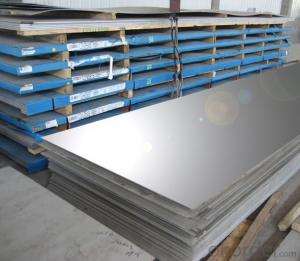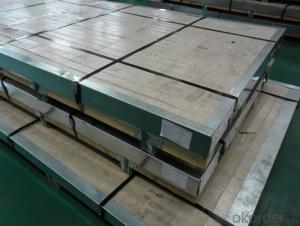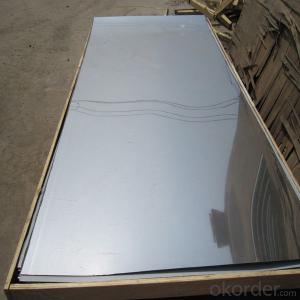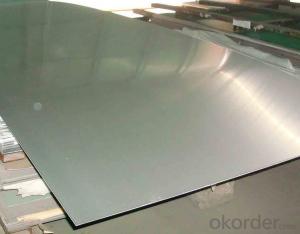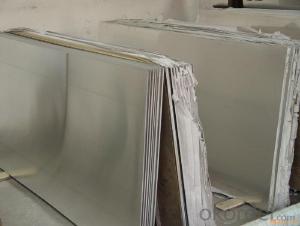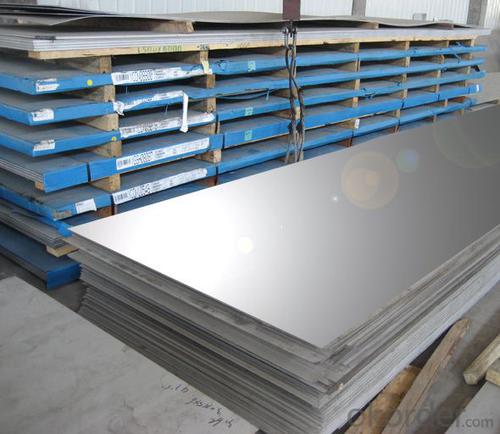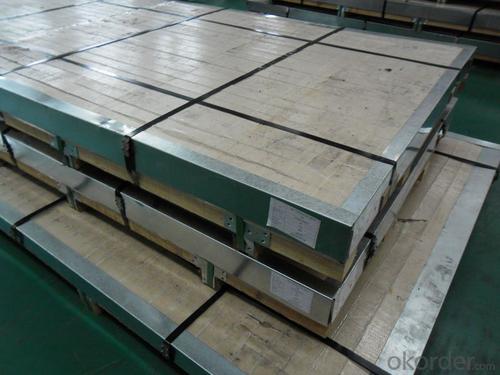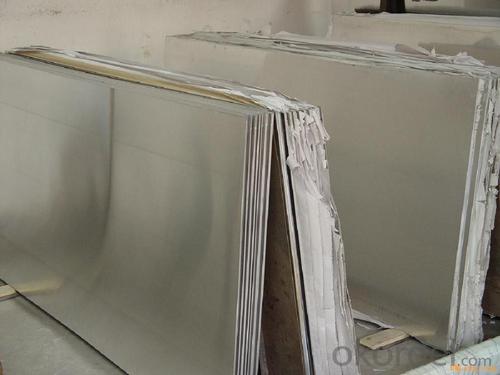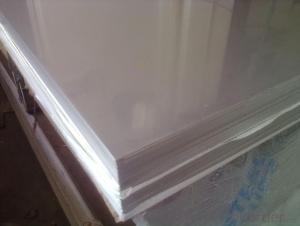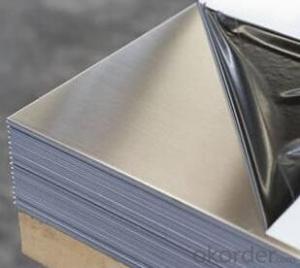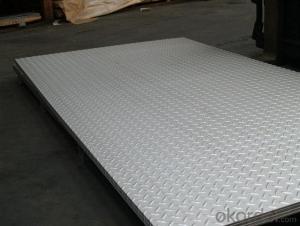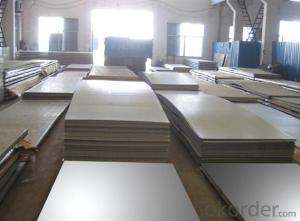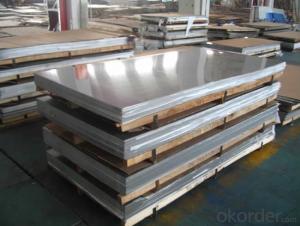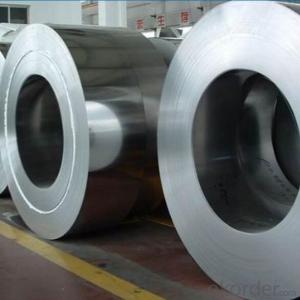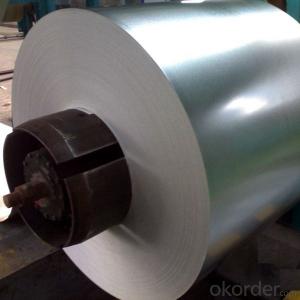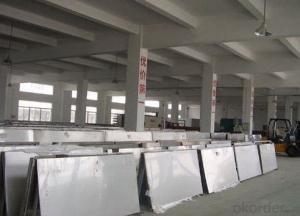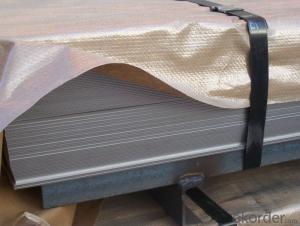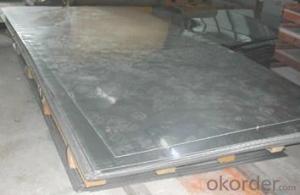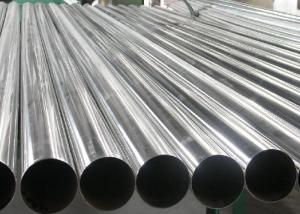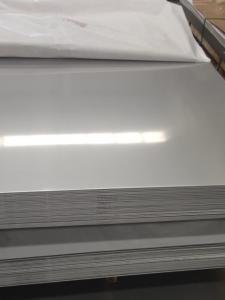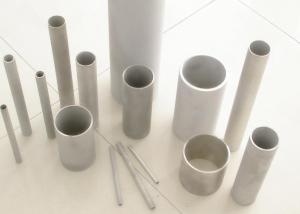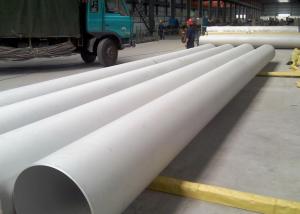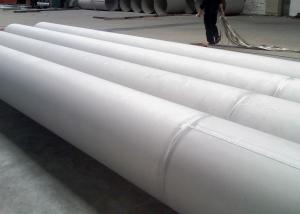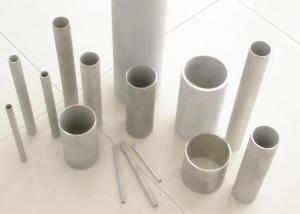Stainless Steel plate and sheet 410 no.1 finish
- Loading Port:
- Shanghai
- Payment Terms:
- TT OR LC
- Min Order Qty:
- 500 m.t.
- Supply Capability:
- 5000000 m.t./month
OKorder Service Pledge
OKorder Financial Service
You Might Also Like
Hot sale stainless steel sheet 201/202/304/304l/316/316l/430
Description of Stainless Steel Sheet:
Description | steel sheet,hot rolled steel sheet,cold rolled steel sheet, steel sheet,sheet,steel plate |
Standard | ASME, ASTM, EN ,BS,GB,DIN, JIS etc |
Application | Steel sheet applies to construction field, ships building industry, petroleum & chemical industries, war and electricity industries, food processing and medical industry, boiler heat exchanger, machinery and hardware fields. |
Packaging | Standard export sea-worthy packing |
Delivery time | 10-30 days |
Quality | No.1 |
Productivity | 500 tons/Day |
Note | Our company has cooperative relation between the domestic agents. Stainless steel sheet can be made accordingto the customers requirements. Fasten delivery. Quality assured. |
Contacts | If you have any question,please feel free contact me. |
Stainless steel sheet surface finish characteristics
Surface finish | Characteristics and application |
2B | The surface brightness and flatness of no2B is better than no2D. then through a special surface treatment to improve its mechanical properties,No2B could nearly satisfy comprehensive uses. |
No.1 | Polished with abrasive belt of grit#100-#200, have better brightness with discontinuous coarse stria, used as inner and external ornaments for building, electrical appliances and kitchen utensils etc. |
No.4 | Polished with abrasive belt of grit #150-#180,have better brightness with discontinuous coarse stria, but thinner than No3, are used as bathtub buildings inner and external ornaments electrical appliances kitchen utensils and food processing equipment etc. |
HL | Polished with abrasive belt of grit #150-#320 on the NO.4 finish and has continuous streaks, mainly used as buildings ornaments elevators, door of building, frontal plate etc. |
BA | Cold rolled, bright annealed and skin-passed, the product have excellent brightness and good reflexivity like mirror, kitchen apparatus, ornament etc. |
8K | The product have excellent brightness and prefer reflexivity can to be the mirror. |
Main Features of stainless steel sheet :
•Escalator, Elevator, Doors
•Furniture
•Production tools, Kitchen appliances, freezers, cold rooms
•Auto Parts
•Machinery and Packaging
•Equipment and Medical devices
•Transport system
Product Details:
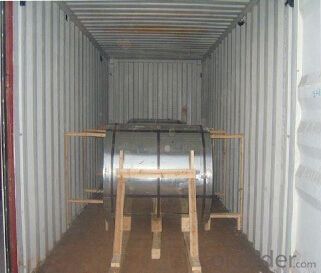
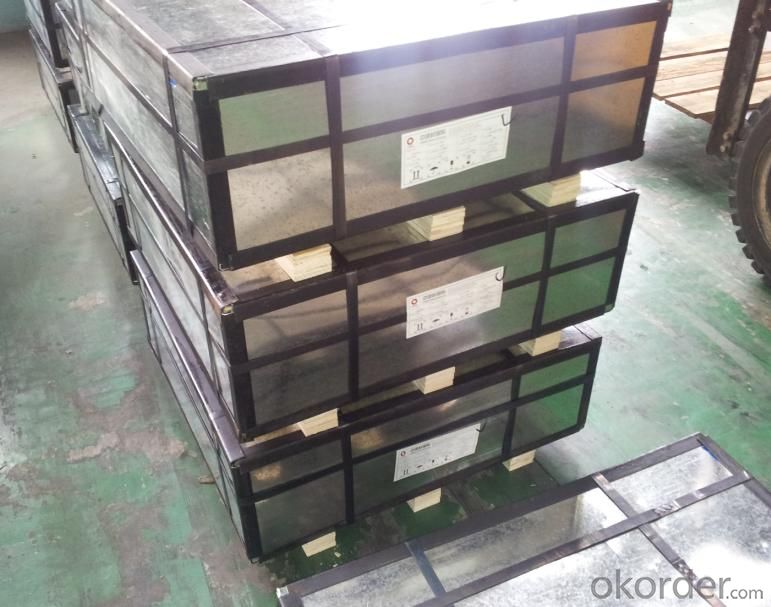
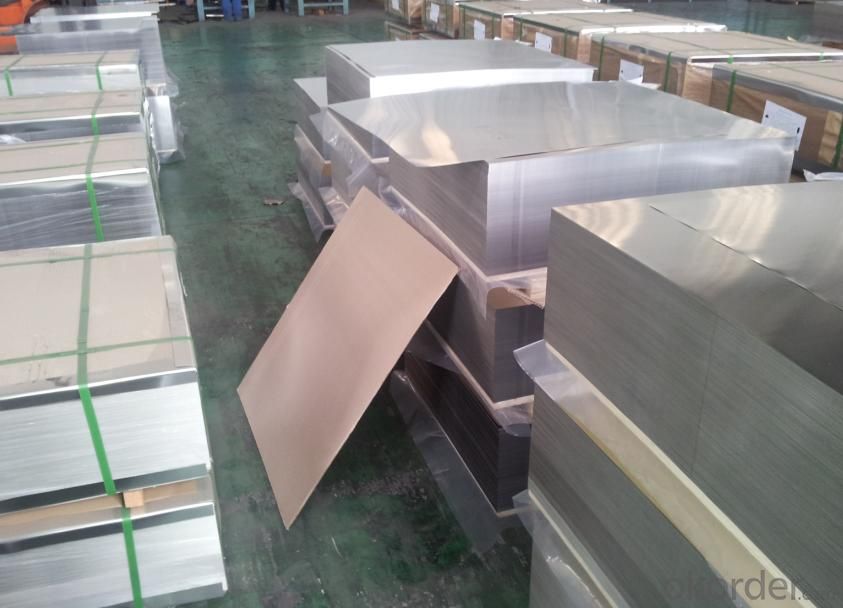
Sandard Seaworth Packing(wooden packing with water proof paper)
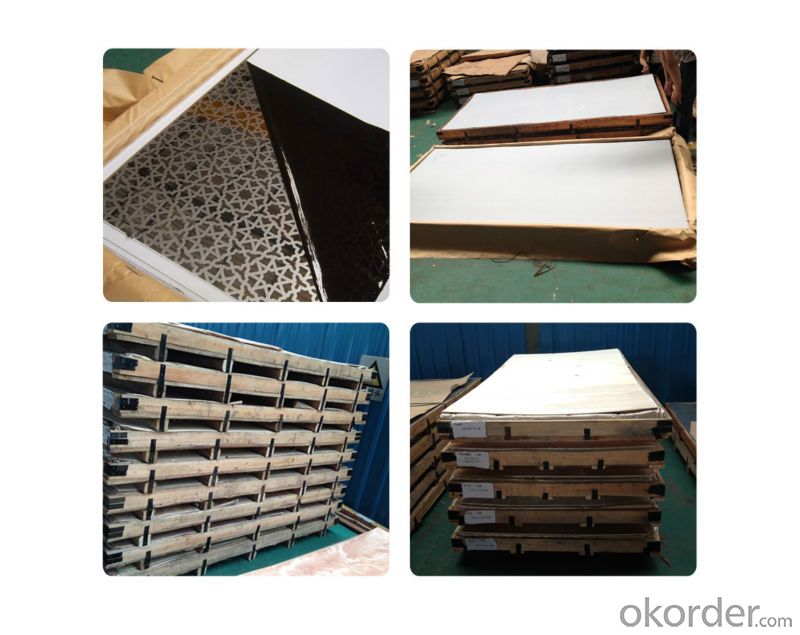
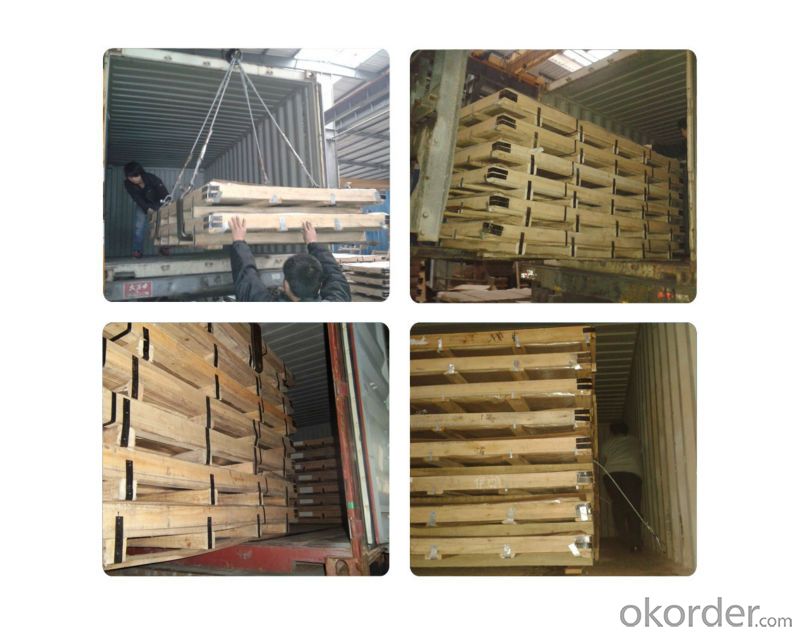
FAQ:
1. What's the quality?
very fine
2. How long get reply?
within 24 hours
If you have any question about stainless steel sheets,donot forget to sending the email to Us! You will get the competitive Price and have a very good experience about the Buying Process! CNBM International Corporation is always your trustful friend!
- Q: What is the coefficient of expansion of stainless steel sheets?
- The coefficient of expansion of stainless steel sheets can vary depending on the specific grade or alloy of stainless steel being used. However, in general, stainless steel has a coefficient of expansion ranging from 10.8 to 16.3 x 10^-6 per degree Celsius. This means that for every degree Celsius increase in temperature, stainless steel sheets will expand by approximately 10.8 to 16.3 millionths of their original length. It is important to note that different grades of stainless steel may have slightly different coefficients of expansion, so it is always recommended to consult the manufacturer or specific material specifications for accurate information.
- Q: Are stainless steel sheets suitable for dairy processing equipment?
- Yes, stainless steel sheets are highly suitable for dairy processing equipment. Stainless steel is widely used in the dairy industry due to its excellent corrosion resistance, hygienic properties, and ease of cleaning. The smooth and non-porous surface of stainless steel prevents the growth of bacteria and other microorganisms, making it ideal for maintaining the cleanliness and safety of dairy processing equipment. Additionally, stainless steel is resistant to chemical reactions with dairy products, ensuring the integrity and quality of the processed milk and other dairy products. Stainless steel sheets are also durable and can withstand high temperatures and frequent cleaning, making them an excellent choice for dairy processing equipment that requires regular sanitization and sterilization.
- Q: Can stainless steel sheets be used for filtration applications?
- Yes, stainless steel sheets can be used for filtration applications. Stainless steel is known for its corrosion resistance and durability, making it an excellent choice for filtration systems. The sheets can be formed into various filter elements, such as screens, discs, or cartridges, to suit different filtration needs. Stainless steel sheets offer high mechanical strength, allowing them to withstand high pressures and temperatures without deformation. Additionally, stainless steel can be easily cleaned and sanitized, making it suitable for applications where hygiene is crucial, such as in the food and beverage industry. Overall, stainless steel sheets are widely used in filtration applications due to their excellent performance and reliability.
- Q: Can stainless steel sheets be used in food processing or medical applications?
- Stainless steel sheets have the capability to be utilized in food processing and medical applications. The reason behind its popularity in these industries is its outstanding resistance to corrosion, high durability, and effortless cleaning properties. The material is able to withstand chemical reactions, ensuring safety when it comes into contact with food and medical equipment. Commonly employed in food processing equipment, storage tanks, countertops, and surgical instruments, stainless steel sheets conform to the strict hygiene standards mandated in the food and medical sectors, thus establishing themselves as a dependable and fitting material for these applications.
- Q: What are the different types of stainless steel sheet finishes for food processing applications?
- There are several different types of stainless steel sheet finishes that are commonly used in food processing applications. 1. No. 1 Finish: This finish is achieved by hot rolling the stainless steel sheet and leaving it with a rough surface. It is not typically used in food processing applications as it is not smooth enough and can harbor bacteria. 2. No. 2B Finish: This is a smooth, reflective finish that is achieved by cold rolling the stainless steel sheet and then annealing it. It is commonly used in food processing applications as it is easy to clean and maintain. 3. No. 4 Finish: This finish has a brushed appearance and is achieved by using abrasive materials to create a uniform grain on the surface. It is often used in food processing applications where a decorative or aesthetic finish is desired. 4. No. 8 Mirror Finish: This is the most reflective finish available for stainless steel sheets. It is achieved by polishing the surface until it is highly reflective and mirror-like. This finish is often used in food processing applications where a high level of cleanliness and hygiene is required. In addition to these finishes, there are also specialized finishes such as bead blasted, patterned, and embossed finishes that can be used in food processing applications to achieve specific aesthetic or functional requirements. Ultimately, the choice of finish will depend on the specific needs of the food processing application, including factors such as hygiene, ease of cleaning, and aesthetic considerations.
- Q: How do I prevent galling on stainless steel sheets?
- To avoid galling on stainless steel sheets, there are various actions that can be taken: 1. Use lubrication: Apply a suitable lubricant to the stainless steel sheets, particularly in areas where they come into contact with other surfaces or materials. This will decrease friction and help prevent galling. 2. Avoid similar metals: Galling can occur when stainless steel sheets come into contact with other stainless steel surfaces due to the transfer of metal particles. To prevent this, try using different metals or non-metallic materials that are compatible with stainless steel. 3. Improve surface finish: Ensure that the stainless steel sheets have a smooth surface finish. Rough surfaces can increase friction and the likelihood of galling. Consider utilizing polishing or grinding techniques to achieve a smoother surface. 4. Control contact pressure: Excessive pressure between stainless steel sheets can lead to galling. Minimize contact pressure by adjusting clamping forces or utilizing gaskets, washers, or other materials that distribute the load evenly. 5. Reduce sliding speed: High sliding speeds can contribute to galling. Slow down the movement or apply anti-galling coatings to decrease the risk of galling on stainless steel sheets. 6. Perform regular maintenance: Regularly inspect the stainless steel sheets for signs of wear or damage. Address any issues promptly to prevent further damage that could result in galling. By implementing these preventive measures, the occurrence of galling on stainless steel sheets can be significantly reduced, ensuring their longevity and optimal performance.
- Q: What is the strain hardening exponent of stainless steel sheets?
- The ability of stainless steel sheets to increase their strength and hardness as they undergo plastic deformation or strain is referred to as the strain hardening exponent. This exponent measures how the stress-strain curve of the material changes as deformation increases. Typically, stainless steel sheets have a strain hardening exponent ranging from 0.2 to 0.4. This value signifies that the material experiences a moderate increase in strength and hardness when subjected to plastic deformation. A higher strain hardening exponent indicates a greater resistance to deformation and better ability to maintain its shape under external forces. The strain hardening exponent plays a crucial role in engineering applications as it impacts the material's formability, ductility, and resistance to deformation. Materials with higher strain hardening exponents are preferred in industrial processes like sheet metal forming or cold working as they offer enhanced work-hardening properties. However, excessively high strain hardening exponents can lead to issues such as cracking or material failure. It is important to acknowledge that the strain hardening exponent can vary depending on the specific grade and composition of the stainless steel alloy. Different stainless steel alloys may exhibit distinct strain hardening behaviors, necessitating consideration of the material's properties and specifications when determining the strain hardening exponent for a particular stainless steel sheet.
- Q: How do you determine the best thickness of stainless steel sheet for a specific application?
- Several factors need to be taken into account when determining the optimal thickness of a stainless steel sheet for a specific application. First and foremost, the intended use of the stainless steel sheet is of utmost importance. Different applications necessitate varying levels of strength, durability, and resistance to corrosion. For instance, if the sheet will be employed in a high-stress environment or exposed to harsh chemicals, it would be prudent to opt for a thicker gauge stainless steel sheet in order to ensure sufficient strength and corrosion resistance. In addition, the size and dimensions of the application must be considered. Larger structures or components may necessitate thicker stainless steel sheets to maintain structural integrity and prevent deformation under load. Conversely, smaller or more delicate applications may benefit from thinner sheets to reduce weight and enhance flexibility. Furthermore, it is crucial to take into account the expected lifespan and maintenance requirements. Generally, thicker stainless steel sheets offer greater longevity and can withstand more wear and tear. However, if the application calls for frequent cleaning or maintenance, a thinner sheet may be more practical. Budgetary constraints should also be factored in. Thicker stainless steel sheets tend to be more costly due to the increased material expense and manufacturing complexity. Striking a balance between desired performance and available resources is crucial in determining the most cost-effective thickness. Lastly, seeking insights from industry standards, guidelines, and experts can be invaluable. Different industries have specific requirements for stainless steel sheet thickness based on their experiences and safety standards. Engaging with professionals can help ensure that the chosen thickness meets the necessary specifications and regulations. In conclusion, the determination of the optimal thickness of stainless steel sheet for a specific application involves considering the intended use, size, expected lifespan, maintenance requirements, budget, and seeking expert guidance. By carefully evaluating these factors, one can make an informed decision and select the most suitable thickness for their specific needs.
- Q: Is the cold rolled steel plate good or the stainless steel plate?
- Although it is impossible to provide specific parameters to prove, in fact, most stainless steel plates are used in oven making. Corrosion resistant, easy to clean, safe and sanitary.
- Q: How do I determine the flatness of stainless steel sheets?
- To determine the flatness of stainless steel sheets, you can use various methods such as visual inspection, measuring with a straight edge or ruler, or utilizing specialized tools like a flatness gauge or a laser level. Visual inspection involves observing the surface for any visible curvature or warping. Measuring with a straight edge or ruler can help identify any gaps or deviations from a flat surface. Specialized tools like a flatness gauge or a laser level provide more precise measurements by quantifying the degree of flatness.
Send your message to us
Stainless Steel plate and sheet 410 no.1 finish
- Loading Port:
- Shanghai
- Payment Terms:
- TT OR LC
- Min Order Qty:
- 500 m.t.
- Supply Capability:
- 5000000 m.t./month
OKorder Service Pledge
OKorder Financial Service
Similar products
Hot products
Hot Searches
Related keywords
